16 Public Spaces Boomers Remember That Are Almost Non-Existent Today

Remember when heading out meant more than just scrolling through your phone? Baby Boomers grew up in an era when social spaces buzzed with real-life interactions. These communal hubs shaped their youth and created lasting memories.
It is time to take a nostalgic trip through these once-thriving public gathering spots that have largely disappeared from American life.
1. Phone Booths

Superman’s favorite changing room has nearly vanished from our streets. Once standing proudly on every corner, these glass-and-metal havens provided privacy for important calls and shelter during sudden downpours.
Kids would squeeze in together, dropping quarters and making prank calls while adults lined up outside, jingling change impatiently. Now they’re mostly relegated to museums and vintage photographs.
2. Soda Fountains

Cherry phosphates and egg creams served with a smile! The neighborhood soda fountain wasn’t just about sweet treats – it was social headquarters for teens and families alike.
White-aproned soda jerks performed mixing magic behind marble counters, creating frothy concoctions in tall glasses. First dates, after-school hangouts, and Saturday afternoon traditions all centered around these bubbly community anchors.
3. Record Stores
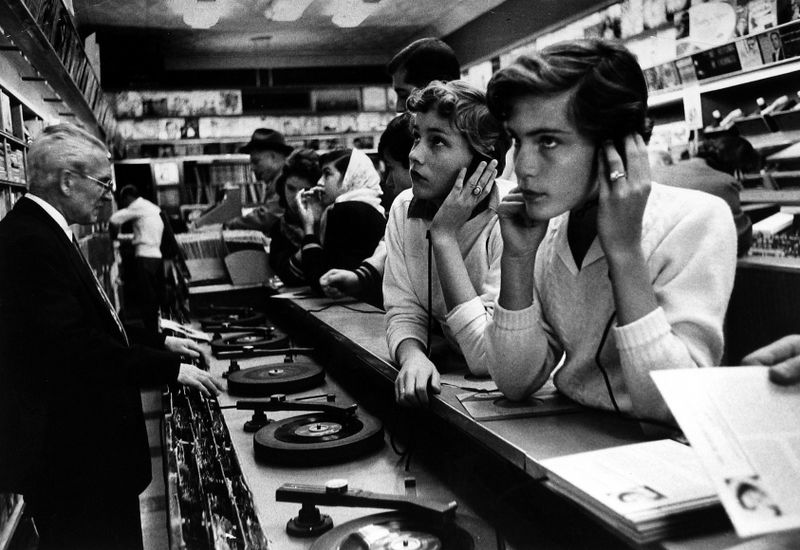
Record stores weren’t merely retail spaces but musical universities where taste was developed and friendships formed over album recommendations. Teenagers spent hours flipping through bins, studying album covers, and debating band merits.
The distinctive smell of cardboard sleeves and the listening stations where you could preview tracks made these shops irreplaceable cultural institutions that Spotify can’t replicate.
4. Video Arcades
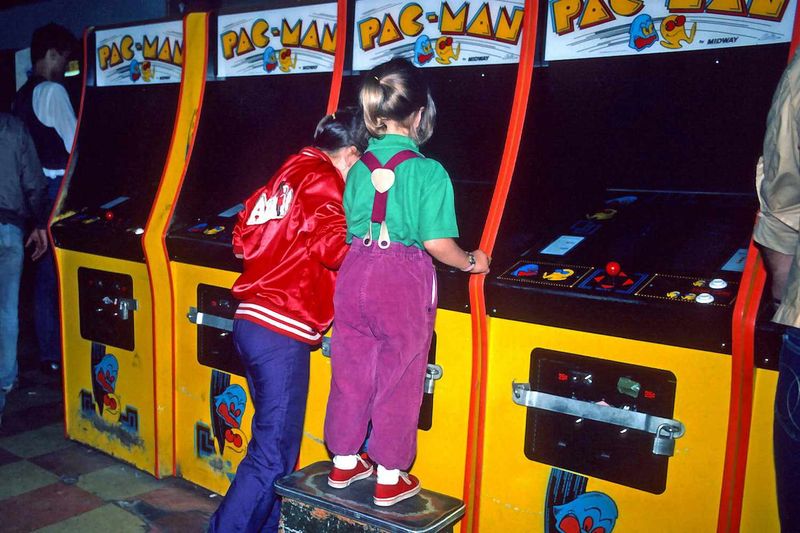
Quarters jingling in pockets, neon lights flashing, and the symphony of electronic beeps and boops – arcades were teenage nirvana!
Row after row of cabinet games created a cacophony of sounds and a community of players. High-score initials became local legends as kids gathered to watch the neighborhood Pac-Man champion work their magic.
Weekend allowances disappeared in minutes but created memories lasting decades.
5. Drive-In Theaters
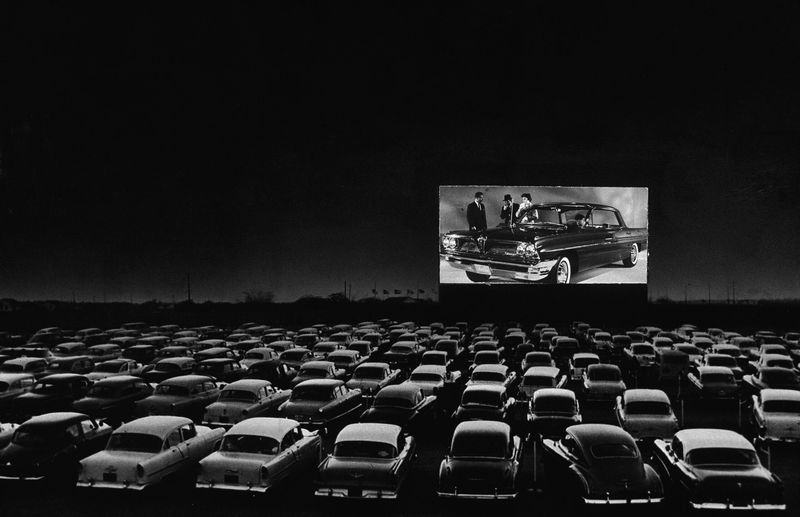
Dating gold! Car speakers hanging on windows, steamy windshields, and the freedom to watch movies under starlit skies made drive-ins magical.
Families arrived in pajamas with pillows and blankets piled in station wagons. Teenagers found privacy in backseats while supposedly “watching” double features.
The playground beneath the giant screen entertained kids before showtime, and intermission cartoons sent everyone rushing to concession stands.
6. Public Libraries with Card Catalogs
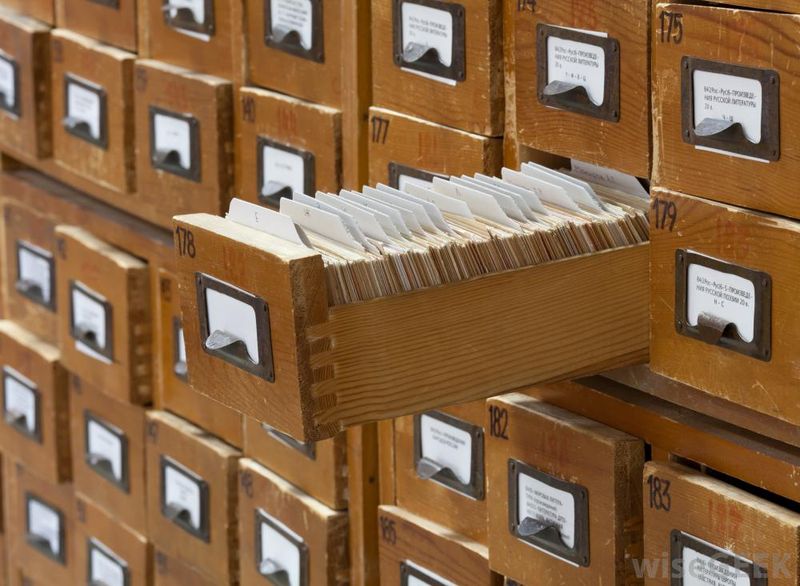
In an era before digital databases, public libraries were the heart of knowledge and community. The wooden card catalog was a treasure trove of information, carefully maintained by attentive librarians. Each drawer held meticulously typed cards that guided seekers to the information they craved.
The gentle clatter of card drawers being opened and closed, and the subtle scent of paper and ink, created an ambiance of tranquility. Libraries were more than just books; they were places where community members could gather, explore, and discuss ideas.
7. Roller Skating Rinks
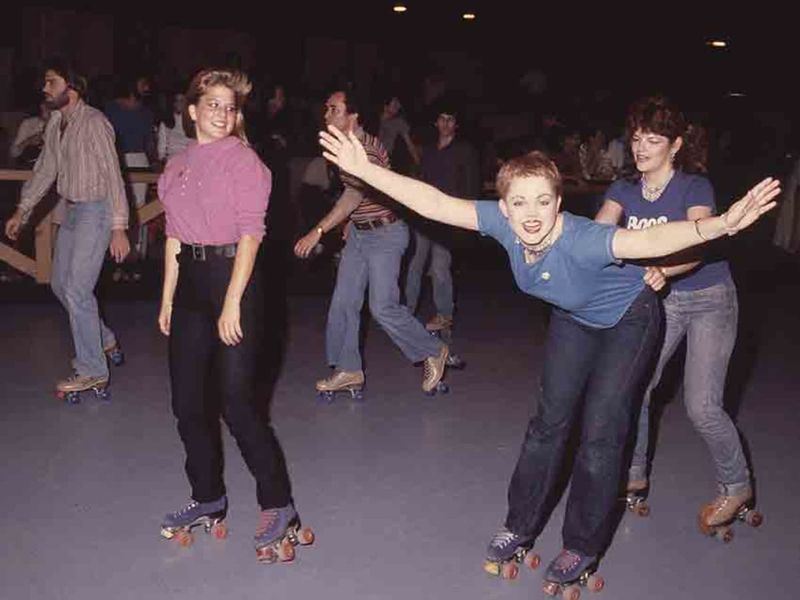
Wooden floors polished to perfection and disco balls spinning overhead – roller rinks were weekend headquarters for generations of kids learning to navigate both wheels and crushes.
Couples skate announcements sent hearts racing as teenagers circled endlessly to Top 40 hits. Birthday parties took over corner tables while serious skaters showed off fancy footwork in the center.
The distinct smell of rental skates and popcorn created an aromatic time capsule for Boomer memories.
8. Dime Stores
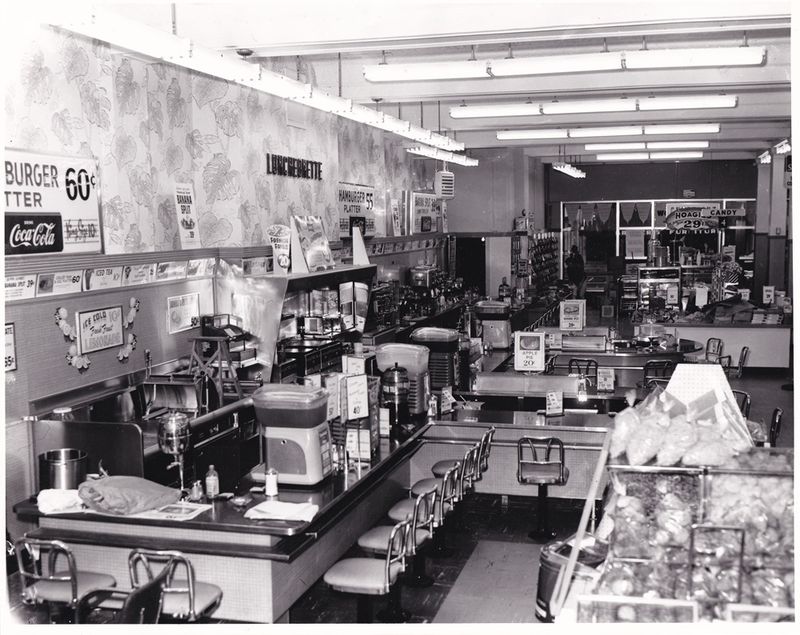
Penny candy heaven! These magical retail wonderlands offered everything from goldfish to garden hoses at prices kids could afford with allowance money.
Glass counters displayed colorful candy while wooden floors creaked underfoot. Shoppers wandered aisles filled with practical necessities alongside delightful frivolities.
F.W. Woolworth and Ben Franklin became household names as these stores anchored Main Streets across America, creating accessible shopping experiences before dollar stores took their place.
9. Newsstands

These sidewalk institutions offered fresh ink on everything from world events to comic book adventures long before digital subscriptions existed.
Morning commuters grabbed daily papers while kids pooled coins for the latest Superman issue. Magazine covers showcased celebrity faces and fashion trends as passersby browsed headlines.
These compact information hubs connected neighborhoods to both local gossip and global news, all managed by vendors who knew every regular’s reading preferences.
10. Automat Restaurants

Food from little windows – how futuristic! These coin-operated wonders eliminated waitstaff by hiding meals behind tiny glass doors that opened when you fed the slot.
Office workers and tourists alike marveled at walls of illuminated compartments revealing sandwiches, pies, and hot dishes. The dance of finding an empty table while balancing trays became lunchtime choreography in major cities.
11. Bowling Alleys with Manual Scoring
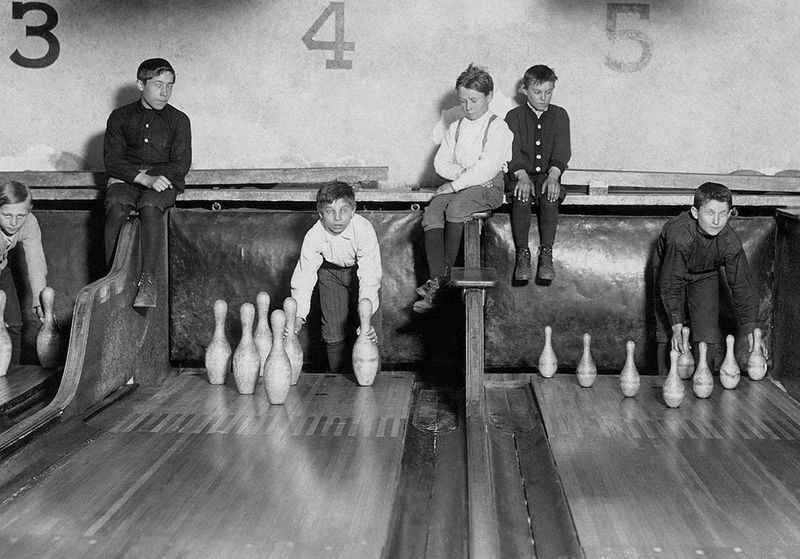
Before digital screens and automatic pinsetters, bowling required actual math skills! League night brought communities together as cigarette smoke hung in the air and rental shoes squeaked across polished approaches.
Teenagers worked as pin boys, resetting fallen pins between frames. Players tracked their own scores with tiny pencils on paper sheets, arguments erupting over questionable arithmetic.
The satisfying crash of a strike and the collective groan following a gutter ball created bowling’s distinctive soundtrack.
12. Full-Service Gas Stations
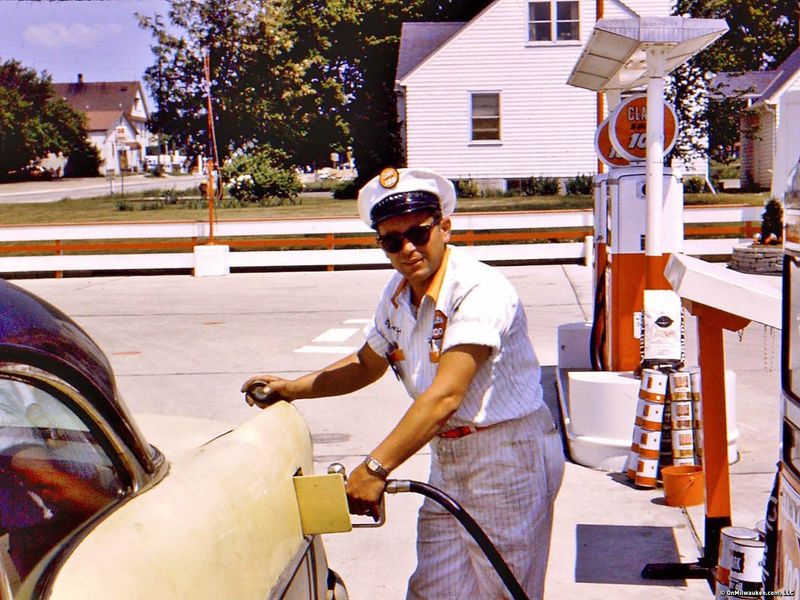
Ding-ding! Driving over the service bell summoned uniformed attendants who pumped gas, cleaned windshields, and checked oil without you leaving your vehicle.
Station mechanics fixed flats and performed tune-ups while kids begged for soda from the machine. These weren’t just refueling spots – they were community hubs where locals caught up on neighborhood news.
Attendants knew regular customers by name and car model, providing service that self-pump convenience stores can’t match.
13. Public Swimming Pools with High Dives

Concrete pools with chlorine so strong it turned blonde hair green were summer headquarters for kids seeking relief from heat and parental supervision!
Towering high dives challenged brave souls while lifeguards enforced the “no running” rule that everyone ignored. Cannonball competitions, Marco Polo games, and swimming tests for deep-end privileges structured endless summer days.
Safety regulations have since removed those dizzying diving platforms that separated the courageous from the cautious.
14. Main Street Shoe Repair Shops

The comforting aroma of leather and polish greeted customers entering these practical establishments where craftsmanship extended footwear lifespans by years.
Cobblers worked magic on worn heels and torn soles while customers chatted about town happenings. Walls displayed shoes awaiting pickup, each tagged with owner names.
These shops represented an era when items were repaired rather than replaced – a concept increasingly foreign in our disposable economy.
15. Salad Bars
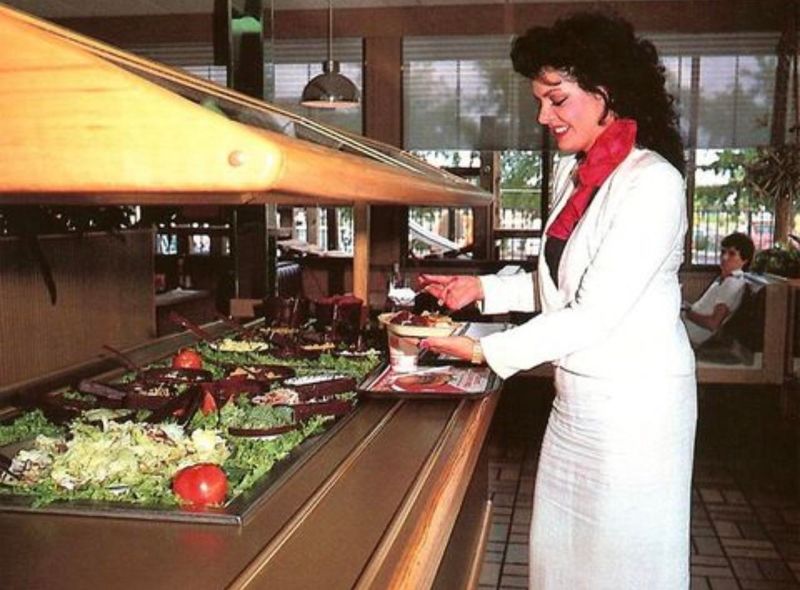
These self-serve food stations revolutionized restaurant dining by offering customization before “have it your way” became marketing gold.
Patrons loaded plates with crunchy croutons and suspiciously old cottage cheese while trying not to double-dip serving spoons. All-you-can-eat promotions attracted college students who constructed towering veggie monuments to maximize value.
COVID-19 delivered the final blow to these communal food displays already endangered by hygiene concerns.
16. Downtown Movie Palaces

Velvet curtains and ornate ceilings transformed ordinary film-watching into royal experiences! These architectural masterpieces made moviegoers feel like Hollywood royalty just by walking through the doors.
Uniformed ushers guided patrons to seats with flashlights while balconies offered premium viewing for extra cents. Single screens showed one film at a time – no multiplexes splitting audiences into tiny theaters.
Many grand movie palaces have been demolished or converted to other uses, their gilded grandeur replaced by stadium seating.
